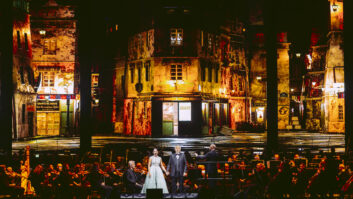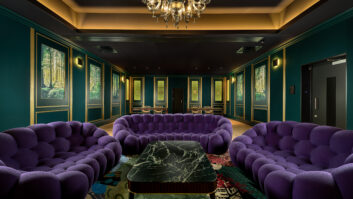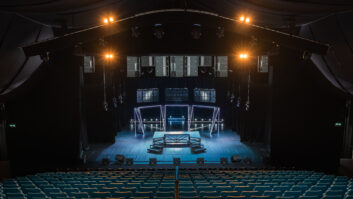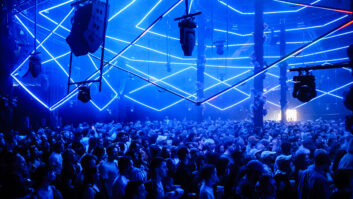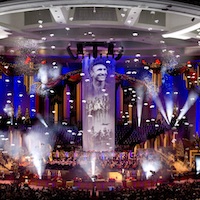
Perhaps best known as the summer and Christmas holiday home to the Mormon Tabernacle Choir, Salt Lake City’s 21,000-seat LDS Conference Center has recently expanded its L-Acoustics sound reinforcement system with the addition of new KARAi, SB18i and KIVA arrays.
Installed by Poll Sound, a local L-Acoustics certified provider, the new systems – which are primarily used for speech reinforcement and musical augmentation – complement an existing dV-DOSC and dV-SUB music reinforcement system installed by the same team six years ago.
According to Poll Sound general manager and lead sound system designer Deward Timothy, the new install is made up of two parts: an exploded centre cluster for the front lower bowl seating and a delay ring for the rear lower bowl seats.
The front lower bowl system features three arrays of 10 KARAi enclosures, fanned out in an LCR arrangement, blanketing coverage to the main aisle approximately 100 feet back. Low frequencies are supplied by two cardioid sub arrays, each consisting of three SB18i hung between the KARAi arrays.
A delay ring consisting of seven arrays of four KIVA modules covers the rear lower bowl seats at the back of the main aisle. With the far rear corners a considerable distance from the centre cluster, two more four-element KIVA arrays were installed to extend coverage to those areas. Furthermore, two additional arrays were installed over the rostrum area to provide both front-fill and masking of any remaining rear-of-room reflection.
Power and processing for all of the new speaker components are supplied by a combined total of 14 LA8 and LA4 amplified controllers.
Chris Martin, who has served as the front-of-house mix engineer for the 360-voice Mormon Tabernacle Choir and 110-piece Orchestra for more than a decade, explains how the new system has improved events and services at the hall – which is also the main meeting hall for conferences of the Church of Jesus Christ of Latter-day Saints. “Many of the leaders of the Church of Jesus Christ of Latter-day Saints are soft-spoken individuals, so our job is a bit like trying to reinforce a whisper, which can be a challenge in a room of this size,” said Martin. “We measured one of our quietest talkers on our previous system last year at 50dB; the gain-before-feedback was next to nothing. With the KARAi, however, we were able to bring him up another 20dB, so the difference has been huge.
“Although we used to get multiple complaints from audience members who couldn’t hear, we recently filtered 125,000 people through the Center in one weekend for our General Conference and had zero complaints – not one! That’s quite a testament to the new system’s clarity and intelligibility. Plus I find that I rarely use any EQ these days. What used to require layers of outboard 31-band EQs – in addition to parametrics on the channel strip for a podium mic – has been narrowed down to just a tiny bit of filtering on our Yamaha PM1d’s channel strip.”
The addition of the KARAi enclosures has not only complemented the pre-existing dV-DOSC arrays, but breathed new life into them as well, said Martin: “Because our primary house arrays are spaced so far apart – nearly 150 feet – we mix music in an LCR format,” he says. “With our previous centre cluster in the room, we essentially had to ‘dumb down’ the voicing of the dV-DOSC arrays somewhat to maintain sonic consistency between all three output channels. But now that we’re using KARAi, we’re able to let the dV-DOSC do what they were meant to do in the first place and it sounds beautiful. Choir conductors and officials absolutely love the transparency and sonic quality of the new system. We finally have the answer to what we’ve been looking to achieve for years.”
Deward Timothy, the designer, added: “Our goal with this most recent project was to engineer and install a system for the lower bowl that still accomplished the original goal of high intelligibility, but also offered higher quality and optimal gain-before-feedback. After the very first production with it in December, comments of praise poured in from everyone including the golden-ear mix engineers, ecclesiastical leaders, musicians, building officials and audience members alike. In terms of subjective quality, this system truly hits a home run.”
www.l-acoustics.com
www.lds.org
www.pollsound.com
Picture: Ed Thompson Intellectual Reserve Inc, 2012


